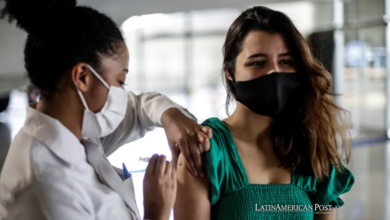What Will the COVID-19 Pandemic Look Like in 2022?
After almost two years of its arrival, we wonder how we will experience the COVID-19 pandemic look like in 2022.

We must bear in mind that globally we are in a situation of advantage compared to what we faced in December of last year. Photo: Pexels
LatinAmerican Post | Vanesa López Romero
Listen to this article
Leer en español: ¿Cómo será la pandemia por la COVID-19 en 2022?
In March 2020, we believed that the situation we lived in two years ago would be something that would last only a couple of months, but as time passed, and with it the way in which we related to our environment changed, we got to the point where we are right now. In the case of Latin America, we have already passed the mandatory confinements and the vaccination programs continue to advance. If this pandemic has taught us anything, it is that it is not something that will end in the blink of an eye, so it is worth asking ourselves what the COVID-19 pandemic will be like in 2022.
What can happen in 2022
First of all, we must bear in mind that globally we are in a situation of advantage compared to what we faced in December of last year. Vaccination rates continue to rise, although there are still many poor and developing countries with very low vaccination rates, and as long as those numbers do not balance, it will be impossible for us to achieve herd immunity. Although Latin America was at some point the region with the most cases of COVID-19, it is now one of the regions that leads the vaccination process, specifically South America. So far, it is estimated that 63.3% of the population is fully vaccinated. Even in some countries the third dose is already being implemented.
Read also: Omicron Variant Mutation: Why Do Viruses Mutate?
This would be reflected in the fact that, in 2022, treatments for the disease may be simpler. Not only because, as more people are vaccinated, there is less chance that they will be infected or that, if they are infected, they will become seriously ill. But if we become seriously ill, we can find treatments much simpler than the intravenous ones that have been used since the beginning of the pandemic. Pharmaceuticals such as Merck and Pfizer are working on pills for both the prevention and treatment of COVID-19. Once the Food and Drug Administration (FDA) approves these pills, they could be prescribed and recalled at any drug store, which would make it much easier to access a faster and less tortuous recovery from the disease.
On the other hand, we find the Omicron variant that has alerted governments and health services around the world due to its high infection capacity and the speed with which it has traveled through countries. With this, in 2022 we could see important changes, such as a greater importance in booster doses in countries where progress has already been made with the application of the two main doses. Experts say that access to reinforcements will be essential to co-eradicate the infection of these new variants. Also, the arrival of Ómicron may increase home testing to detect the disease. When the Delta variant arrived, the number of home antigen tests increased exponentially, implying that this could happen in 2022 with the Omicron.
More variants will continue to appear
Something that we must not doubt is the arrival of more variants that may be stronger, contagious and / or dangerous than we have seen in 2021. This will happen because the nature of a virus is to mutate and because the COVID-19 virus will continue to spread and mutate until more than 70% of the world's population is vaccinated. Although the figures for Latin America are good, we find figures such as those for the African region, where there is only a complete vaccination rate of 8.8% of its population .
In that order of ideas, we will have to prepare to receive new variants that will not necessarily be more dangerous, we have seen many strains appear and disappear. However, the world's population and health services and organizations must be vigilant about what happens next. Likewise, the international community should pay more attention to regions with low vaccination rates and take action to vaccinate as many of the population as possible.




